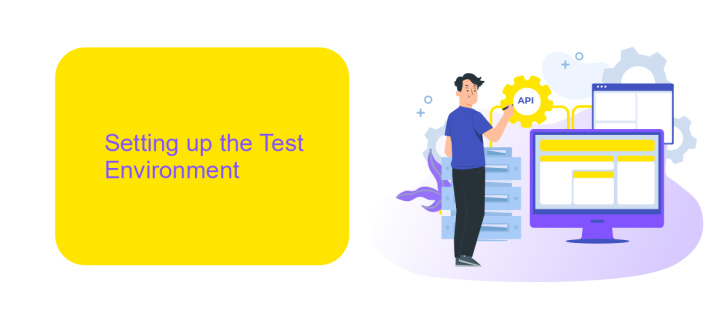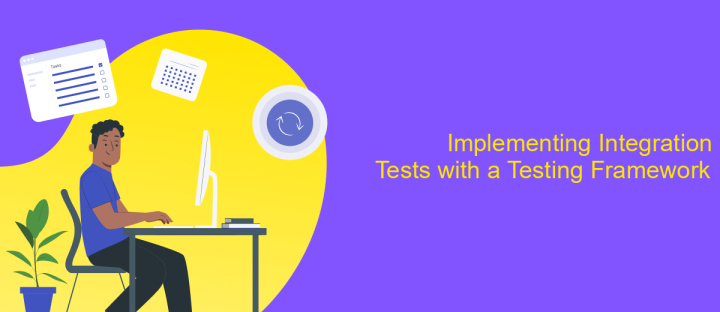Integration Testing REST API
Integration testing for REST APIs is a crucial step in the software development lifecycle, ensuring that different components of an application work together seamlessly. This process involves testing the interaction between various modules and external services to identify any issues that might arise during real-world usage. By conducting thorough integration tests, developers can enhance the reliability, performance, and user experience of their applications, ultimately leading to more robust and efficient software solutions.
Introduction to Integration Testing and REST APIs
Integration testing plays a crucial role in the software development lifecycle, particularly when dealing with REST APIs. It involves testing the interaction between different modules or services to ensure they work together as expected. Unlike unit testing, which focuses on individual components, integration testing validates the end-to-end functionality of the system. This type of testing is essential for identifying issues that may arise when different components are integrated, ensuring that the entire system operates smoothly.
- Validates the interactions between different API endpoints.
- Ensures data consistency and integrity across services.
- Identifies potential security vulnerabilities in integrated systems.
- Helps in verifying the performance and reliability of the API under load.
- Facilitates early detection of bugs and reduces debugging time.
REST APIs have become the backbone of modern web applications, enabling seamless communication between client and server. As applications grow complex, integration testing becomes indispensable to ensure that these APIs interact correctly with other components. It helps developers and testers gain confidence that the system will function as intended in a production environment, ultimately leading to a more robust and reliable application.
Setting up the Test Environment

Before diving into integration testing for your REST API, it's crucial to establish a robust test environment. Begin by setting up a dedicated testing server that mirrors your production environment as closely as possible. This server should have all necessary dependencies and configurations to ensure that tests run smoothly and accurately reflect real-world scenarios. Additionally, make sure to isolate the test environment from production data to prevent any accidental data corruption or loss.
Consider leveraging tools like ApiX-Drive to streamline the integration process. ApiX-Drive offers a user-friendly interface to connect various applications and automate data flows, making it easier to simulate real API interactions. This can be particularly beneficial for testing complex integrations involving multiple services. Ensure that your API endpoints are well-documented and accessible, and use mock data to validate responses under different conditions. By thoroughly preparing your test environment, you can identify potential issues early and enhance the reliability of your API.
Designing Effective Integration Tests

Designing effective integration tests for a REST API requires a strategic approach to ensure comprehensive coverage and reliability. The primary goal is to validate the interactions between different components of the application and external services, ensuring they work together seamlessly. To achieve this, it's essential to focus on both the functional and non-functional aspects of the API, such as performance, security, and data integrity.
- Identify the critical paths and scenarios that need testing, focusing on high-risk areas and core functionalities.
- Use realistic data and scenarios to simulate actual usage, ensuring the tests mimic real-world conditions.
- Incorporate both positive and negative test cases to validate the API's robustness and error handling capabilities.
- Automate the integration tests to enable continuous testing and faster feedback loops.
- Regularly review and update the test cases to adapt to changes in the API or its dependencies.
By following these guidelines, teams can create integration tests that not only verify the correctness of the API but also enhance its reliability and performance. This proactive approach helps in identifying potential issues early, reducing the risk of failures in production and ensuring a seamless user experience.
Implementing Integration Tests with a Testing Framework

Integration testing of REST APIs is crucial to ensure that different components of your application work together seamlessly. A robust testing framework can help automate and streamline this process. Popular choices include JUnit, TestNG, and PyTest, each offering unique features and capabilities. By leveraging these frameworks, you can efficiently validate the interactions between your API endpoints and other system components.
To begin, set up your testing environment by configuring the necessary dependencies and tools. Then, create test cases that cover various scenarios, including both expected and edge cases. It's important to simulate real-world conditions to ensure your API behaves as intended under different circumstances.
- Define test data and mock services to isolate the API from external dependencies.
- Utilize assertions to verify the correctness of API responses.
- Run tests automatically as part of your continuous integration pipeline.
By systematically implementing integration tests using a testing framework, you can identify potential issues early in the development cycle. This proactive approach not only enhances the reliability of your application but also boosts confidence in its overall functionality. Consistent testing ensures that your REST API remains robust and adaptable to future changes.


Best Practices and Common Pitfalls
When conducting integration testing for REST APIs, it's crucial to establish a clear testing strategy. Begin by defining the scope and objectives of your tests to ensure comprehensive coverage. Utilize automated testing tools to streamline the process and reduce human error. Focus on testing API endpoints in isolation before integrating them with other components. Incorporate data-driven testing to validate API responses under various scenarios, ensuring robustness and reliability. Maintain a well-documented test suite to facilitate collaboration and future maintenance.
Common pitfalls in REST API integration testing include inadequate error handling and insufficient test data. Avoid hardcoding values in your tests, as this can lead to brittle tests that fail with minor changes. Ensure that your tests are environment-independent and can run in different stages of development. Overlooking security testing is another common mistake; always verify authentication, authorization, and data encryption. Consider using tools like ApiX-Drive to automate and manage your API integrations efficiently, reducing the risk of integration errors and enhancing test coverage.
FAQ
What is Integration Testing in the context of REST APIs?
How do you perform Integration Testing for REST APIs?
What is the difference between Unit Testing and Integration Testing for REST APIs?
How can I automate Integration Testing for REST APIs?
What are some common challenges in Integration Testing for REST APIs?
Apix-Drive is a simple and efficient system connector that will help you automate routine tasks and optimize business processes. You can save time and money, direct these resources to more important purposes. Test ApiX-Drive and make sure that this tool will relieve your employees and after 5 minutes of settings your business will start working faster.

